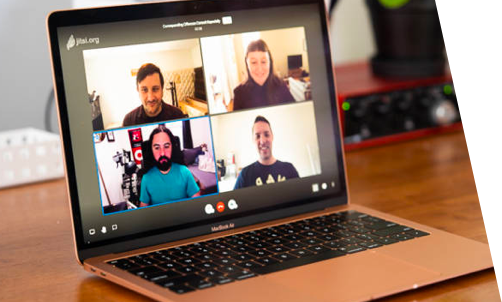We live in a world dominated by visual communication. 85% of LinkedIn users now state that they prefer watching a video to reading a script. What used to be the preserve of TV is now available to everyone through our smartphones.
The camera is a powerful medium for individuals and organisations to convey their messages effectively. Delivering an engaging piece to camera requires skill, preparation and an understanding of the medium.
This blog will explore seven key elements to help you be more effective on camera.
1. Know Your Message
Before stepping in front of the camera, you must be very clear about your message. When preparing your message, a great place to start is to answer the following three questions:
Who am I talking to?
Why am I talking to them?
What do I want them to think, do or feel?
It will help you clarify the messages you want to deliver and the action you wish your audience to take.
2. Tailor your message for your audience
To tailor your message to your audience, you must understand who they are, their needs, and what motivates them. This information will help you craft a message that resonates with them and speaks to their needs.
You can achieve this by using specific examples and anecdotes that connect with them, using easy-to-understand and relatable language, and acknowledging and addressing any objections or concerns they might have.
3. Be Concise and Engaging
Achieving clarity, conciseness, and engagement enhances audience understanding. Opt for clear, simple language, avoid jargon, and cut unnecessary words. Be mindful of sentence length and aim for brevity without sacrificing clarity.
To create engaging videos, start with an attention-grabbing opening - you could use an interesting fact or a startling statistic. Use stories that connect with your audience emotionally. People are more likely to engage with content that resonates with them emotionally. Include captions to make your content accessible and engaging even without the audio.
Encourage viewer interaction. Most channels now offer online polls and feedback mechanisms, allowing your audience to engage or seek further information actively.
4. Speak like a Human
To communicate a message effectively, you need to use your voice correctly. The way you sound as you speak can bring your words to life or sap them of their power. Think about how you sound to your audience. What about the tone of your voice? What about the pace and the volume? How well do you vary them throughout your pitch? If you have ever heard someone speak in a monotone voice, you will understand what we are discussing.
Slow down and use pauses. Try to avoid using fillers. These are the uses of “um, ah, so, you know, obviously or actually...” Well-placed pauses make you sound much more professional. It gives you a chance to breathe and centre yourself and allows your audience to reflect on the key points you’ve just made.
5. Master Non-Verbal Communication
Body language, facial expressions and gestures play a significant role in engaging your audience. Practise maintaining eye contact and looking at the camera. If using a laptop, look at the camera, not the screen. Sit up straight to demonstrate attention and energy. Hands are also crucial as they can help you to emphasise a key point; however, if you overuse them, they can become a visual distraction. To mitigate potential distractions, use your hands but avoid them appearing on camera.
6. Lighting background and dress
If not using lights, face your brightest light source to eliminate facial shadows. It is a better look for you and your audience. Have a look at your background. What can people see behind you? An untidy background is another distraction and could detract from your message.
Dress the part. Even though participants can usually only see you from the shoulders up, wear something that looks good on you from the waist up. The better you dress from head to toe, the better your posture and the better you will feel. When you feel better, you are a more relaxed and more confident presenter.
7. Practice, Practice, Practice
Practising out loud is crucial for effective communication as it helps refine your delivery and boost your confidence. Speaking out loud enables you to identify and address potential issues. When you record yourself, you can assess and refine your performance until you are confident in your delivery.
Mastering the skill of speaking effectively on camera is essential for everyone. It requires a blend of preparation and a little skill. These tips will better equip you to deliver your message with impact, leaving a lasting impression on your audience.

